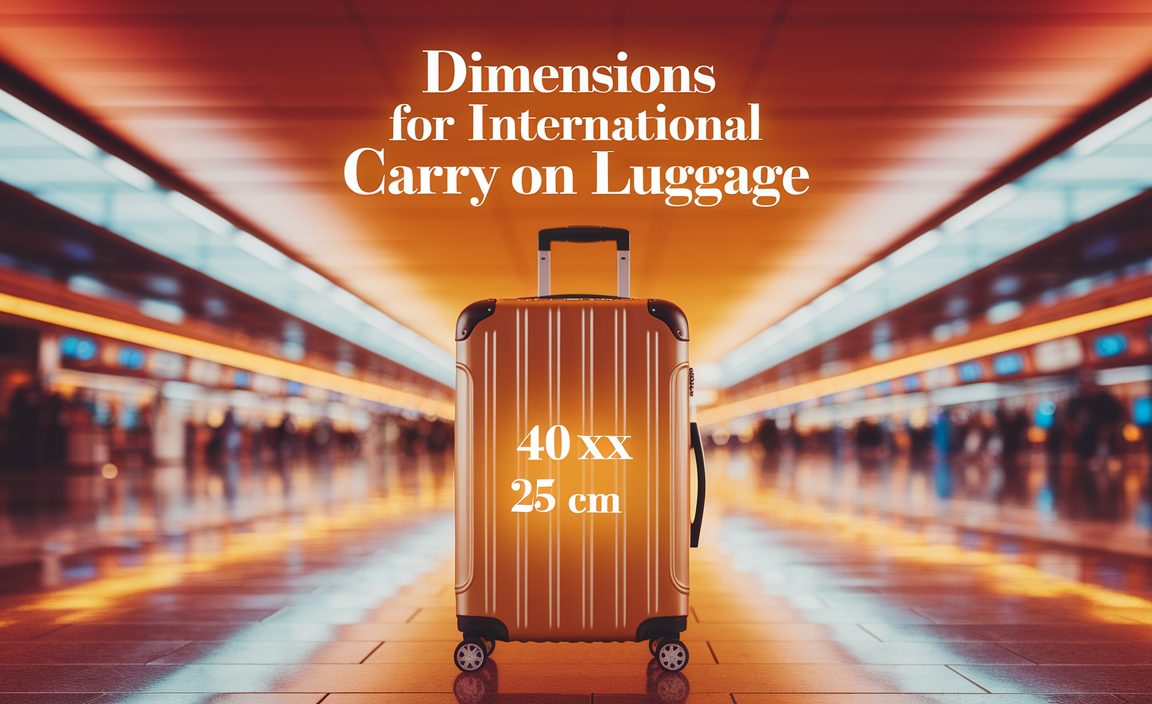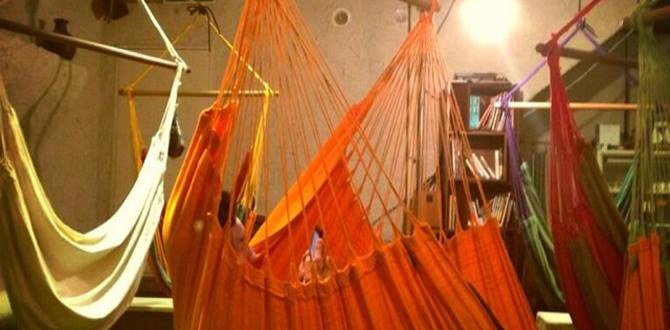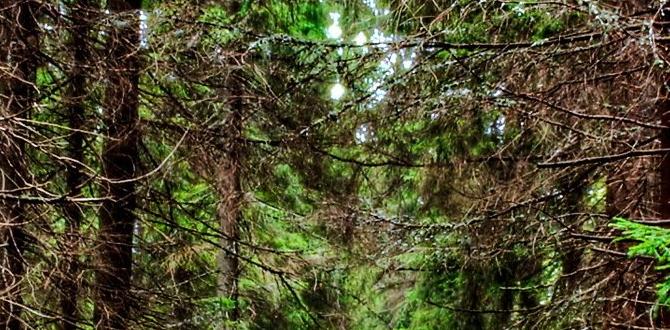Australia on a budget is totally achievable! This guide offers easy tips for flights, accommodation, food, and activities, ensuring you see the best of Australia without breaking the bank. Focus on smart planning and local experiences for an unforgettable, affordable adventure.
G’day, fellow travelers! Dreaming of kangaroos, vast outback landscapes, and stunning coastlines, but worried about the cost of visiting Australia? You’re not alone! It’s a big continent, and the thought of budgeting for such an epic trip can feel overwhelming. But don’t let that stop you. Traveling Australia affordably is absolutely possible with a little savvy planning and a willingness to embrace local ways.
This guide is here to make it simple. We’ll walk you through everything you need to know, from snagging cheaper flights to finding cozy, budget-friendly places to stay. We’ll also share tips on eating well without spending a fortune and suggest amazing free or low-cost activities. Get ready to discover how to experience the magic of Australia comfortably, safely, and without draining your wallet. Let’s dive in!
Planning Your Australian Adventure: The Budget Traveler’s Roadmap
Embarking on a journey down under is an exciting prospect! To ensure your trip is as memorable as it is affordable, thoughtful planning is your best friend. This section will lay the groundwork for a budget-conscious Australian adventure, covering the essentials before you even pack your bags.
1. When to Go: Timing is Everything
Australia is a massive country with diverse climates. Traveling during the shoulder seasons can offer significant savings and a more pleasant experience without the peak crowds.
- Spring (September – November): Pleasant temperatures across most of the country. wildflowers are blooming in many areas, especially Western Australia. This is a fantastic time for most regions.
- Autumn (March – May): Mild weather in the south, with warmer temperatures in the north. It’s ideal for exploring cities and national parks without the intense summer heat.
- Summer (December – February): This is peak season in many popular areas like Sydney and the Great Barrier Reef. Expect higher prices and larger crowds, but it’s perfect for beach lovers and those wanting to explore tropical northern Queensland and the Northern Territory.
- Winter (June – August): Cooler in the south (meaning potential snow in the Australian Alps!), but warm and dry in the tropical north, making it prime time for exploring Queensland’s beaches and the Red Centre.
Pro Tip: Avoid major holidays like Christmas and New Year’s, and Australia Day (January 26th), as prices for flights and accommodation will skyrocket.
2. Flights: Securing Your Passage Down Under
Flights are often the biggest expense, but smart booking can drastically cut this cost. Flexibility is key!
- Book in Advance: Generally, booking international flights 3-6 months out yields the best prices.
- Be Flexible with Dates: Flying mid-week (Tuesdays and Wednesdays) is typically cheaper than weekends. Use flight comparison sites that allow you to view prices across a whole month to spot the cheapest days.
- Consider Layovers: Direct flights are convenient but often more expensive. Flights with one or two layovers can offer substantial savings.
- Jetstar and Tigerair: For domestic travel within Australia, budget airlines like Jetstar and Tigerair (now operating as a part of Virgin Australia) can be very affordable. Be mindful of their baggage allowances and extra fees for services like seat selection or checked bags.
- Sign Up for Alerts: Many airlines and travel sites offer email alerts for price drops on your chosen routes.
3. Visas and Documentation
Before you can even think about booking, ensure you have the necessary travel documents. Most visitors to Australia need a visa or an Electronic Travel Authority (ETA).
- eVisitor (subclass 651) or Electronic Travel Authority (ETA) (subclass 601): For short stays for tourism or business. These are usually free or have a small service fee. Apply well in advance through the official Australian Department of Home Affairs website.
- Passport Validity: Ensure your passport is valid for at least six months beyond your intended stay.
Failing to have the correct visa can lead to denied entry, so always rely on official government sources for visa information.
Accommodation on a Shoestring: Where to Rest Your Head
Finding a safe, comfortable, and affordable place to sleep is crucial for any budget traveler. Australia offers a range of options beyond expensive hotels.
1. Hostels: The Social Hubs for Budget Travelers
Backpacker hostels are the backbone of budget travel in Australia. They offer dormitory-style rooms (often with 4-10 beds) and private rooms, shared kitchens, common areas, and organized tours and activities.
- Typical Costs: Dorm beds can range from AUD $25-$50 per night, while private rooms are typically AUD $70-$120+. Prices vary significantly by location and season.
- Amenities: Most hostels have kitchens, making it easy to cook your own meals. They often offer laundry facilities, Wi-Fi (sometimes for a fee), and social events.
- Booking: Websites like Hostelworld, Booking.com, and directly through hostel chains (e.g., YHA Australia) are great for finding and booking.
2. Budget Hotels and Motels
Outside of major city centers or in regional towns, you can often find independently owned motels and budget hotel chains that offer more privacy than hostels at a reasonable price. These are particularly good for couples or small families.
- Look for: Chains like Ibis Budget, or search for “motels” in your desired town.
- Consider: Basic amenities are usually provided – a bed, private bathroom, and sometimes a small fridge.
3. Airbnb and Private Rentals
Renting a room in a local’s home or a small apartment through platforms like Airbnb can be cost-effective, especially for longer stays or if you’re traveling with a small group. You often get access to a kitchen and a more local feel.
- Benefits: Potential to self-cater, more space, and unique local experiences.
- Be Aware: Prices can fluctuate wildly. Always check the total cost including cleaning fees and service charges.
4. Caravan Parks and Camping
If you’re adventurous and don’t mind roughing it a bit, caravan parks offer powered and unpowered sites for tents and campervans. Many also have basic cabins or bunkhouse accommodation.
- Cost-Effective: Camping sites can be as low as AUD $20-$40 per night.
- Resources: Websites like WikiCamps Australia are invaluable for finding campsites and facilities across the country.
Comfort Item Tip: Whether staying in a hostel dorm or a budget room, consider bringing earplugs and an eye mask to ensure a restful sleep. For those who might need extra security or comfort during nighttime hours, discreet adult diapers or child diapers can offer peace of mind for a travel journey, ensuring you’re always prepared and comfortable, no matter the accommodation situation.
Eating Well Without Breaking the Bank: A Culinary Quest
Australia has amazing food, from fresh seafood to diverse international cuisine. Eating out for every meal can be costly, but there are smart ways to enjoy the local flavors on a budget.
1. Embrace Supermarkets and Self-Catering
This is hands-down the cheapest way to eat. Major supermarket chains like Woolworths, Coles, and Aldi offer a wide range of affordable groceries.
- Stock Up: Buy essentials like bread, cheese, fruit, vegetables, pasta, and cereal.
- Picnics: Pack lunches for day trips. Enjoying a sandwich by a beautiful beach or in a park is a quintessential Australian experience and saves you money.
- Cook at Your Accommodation: If your hostel or Airbnb has a kitchen, use it! Cooking dinner a few nights a week will significantly reduce your food budget.
2. Explore Local Markets
Farmers’ markets and weekend markets are fantastic places to find fresh, local produce at good prices. They’re also a great way to sample local delicacies and enjoy a vibrant atmosphere.
3. Take Advantage of Pub Meals and “Happy Hours”
Many pubs offer hearty, affordable meals, especially for lunch. Look for “meal deals” or “pub classics.” Happy hour specials on drinks can also be a good way to save if you enjoy a casual beverage.
4. Coffee Culture on a Budget
Australia takes its coffee seriously! While a fancy latte can add up, many cafes offer simple black coffee or filter coffee at lower prices. Some bakeries also have cheap and cheerful pies and pastries that make for a quick and filling breakfast or snack.
5. Look for “Value” Deals and Food Courts
In larger cities, food courts in shopping centers often have a wide variety of cuisines at competitive prices, offering more affordable options than sit-down restaurants.
Getting Around Australia: Navigating the Land Down Under Affordably
Australia’s vastness presents a unique travel challenge. Choosing the right transport methods is key to managing your budget.
1. DomesticFlights: For Crossing Long Distances
When crossing vast distances between states or major cities (e.g., Sydney to Perth), domestic budget airlines like Jetstar and Virgin Australia can be surprisingly affordable if booked in advance. Rex Airlines is another option, particularly for regional routes.
2. Buses: The Backbone of Budget Travel
For inter-city and inter-state travel, buses are a popular and economical choice. Companies like Greyhound Australia offer extensive routes across the country.
- Hop-On Hop-Off Passes: These passes offer great flexibility, allowing you to travel along a set route and stop in different towns for as long as you like before catching the next bus. They can be excellent value for money if you plan to see multiple destinations.
- Book Direct: It’s often best to book directly through the bus company’s website.
3. Trains: Scenic but Often Pricier
While Australia has some iconic train journeys (like The Ghan or Indian Pacific), these are generally luxury experiences and not budget-friendly. Standard train travel between major cities is less common or extensive than in Europe or Asia and can be more expensive than flying or bus travel when available.
4. Car Hire and Campervans: Freedom with Costs
Hiring a car or campervan offers immense freedom, especially for exploring regional areas or national parks. However, fuel costs, insurance, and rental fees can add up quickly.
- Consider: If traveling in a group, sharing costs can make this more viable.
- Compare Prices: Always shop around for the best rental deals.
- Fuel Efficiency: Opt for smaller, more fuel-efficient vehicles if possible.
5. Public Transport within Cities
Major cities like Sydney, Melbourne, Brisbane, Perth, and Adelaide have excellent public transport networks (buses, trains, trams, ferries).
- Opal Card (NSW), Myki Card (VIC), Go Card (QLD), SmartRider (WA): Get a travel card for the state you’re in. These are usually cheaper than buying single tickets, especially if you travel frequently. Often, there’s a daily cap on fares, meaning you won’t pay more than a certain amount for a day’s travel.
- Walking and Cycling: For exploring within city centers, walking and cycling are free and fantastic ways to see the sights. Many cities offer bike-sharing schemes.
Free and Low-Cost Activities: Experiencing Australia’s Wonders
Australia is blessed with natural beauty and vibrant culture, much of which can be enjoyed for free or very little cost.
1. Beaches, Beaches, Beaches!
From the iconic Bondi Beach in Sydney to the pristine shores of Whitehaven Beach in the Whitsundays, Australia has thousands of kilometers of coastline. Swimming, sunbathing, and beachcombing are all free!
2. National Parks and Nature Walks
Entry fees for most national parks in Australia are minimal, often a few dollars per vehicle per day, or sometimes free. These parks offer breathtaking scenery, hiking trails, waterfalls, and opportunities to spot native wildlife.
- Examples: Royal National Park (NSW), Dandenong Ranges National Park (VIC), Lamington National Park (QLD), Karijini National Park (WA).
- Check Fees: Some particularly popular or managed parks might have higher fees, so it’s always worth checking the relevant Parks website (e.g., NSW National Parks, Parks Victoria).
3. City Exploration: Free Walking Tours and Landmarks
Many capital cities offer free walking tours (though tipping your guide is highly recommended!). Wander through city centers, visit free museums and galleries, and soak in the atmosphere.
- Iconic Free Sights: Sydney Opera House (exterior viewing), Melbourne’s street art laneways, the Queensland Cultural Centre (Brisbane), Kings Park (Perth).
4. Wildlife Spotting
Beyond zoos, try to spot native animals in their natural habitat. Kangaroos can often be seen in national parks or even quiet suburban areas at dawn and dusk. Look for diverse birdlife everywhere. For marine life, snorkeling off accessible beaches can reveal colorful fish and even sea turtles.
5. Free Events and Festivals
Keep an eye on local event listings for free concerts, festivals, markets, and community events happening during your visit. Many cities have events year-round.
Budget Breakdown: A Sample Scenario (Per Person, Per Day)
This is a highly generalized estimate and can vary significantly based on your travel style, location, and specific choices. It assumes you’re traveling relatively frugally but not in extreme luxury and incorporates some comfort considerations.
| Category | Estimated Cost (AUD) | Notes |
|---|---|---|
| Accommodation (Hostel Dorm) | $35 – $55 | In tourist hot spots, can be higher. Private rooms push this up significantly. |
| Food (Mostly Supermarket/Packed Lunch) | $40 – $60 | Includes breakfast, lunch, and one simple cooked dinner or cheap takeaway. Eating out more adds $20-$50+ per meal. |
| Transport (Local/Day Trip) | $15 – $30 | Covers daily public transport in a city, or a contribution to fuel if in a rental car with others. Long-distance travel and internal flights are separate large costs. |
| Activities (Low-Cost/Free) | $10 – $25 | Entry to a national park, a coffee, a small souvenir, or part of a shared tour cost. |
| Miscellaneous (Toiletries, Small Incidentals) | $10 – $20 | Contingency for personal items, laundry, small treats. |
| Daily Total (Estimate) | $110 – $190 | This is for daily expenses once you’re in Australia. Flights and major inter-state travel are additional. |
Important Considerations:
- This budget excludes international flights, visa fees, and major domestic travel (like a flight from Sydney to Cairns).
- Costs will be higher in major cities like Sydney and Melbourne compared to regional towns.
- If you invest in travel passes for buses or tours, the daily activity cost might be lower.
- Prioritizing free activities and self-catering can bring the daily total down to the lower end or even below $100 in some cases.
FAQ: Your Quick Australian Budget Travel Questions Answered
Q1: Is Australia expensive for tourists?
Yes, Australia is generally considered an expensive travel destination, particularly for accommodation, dining, and alcohol. However, with smart planning, utilizing budget accommodation like hostels, self-catering meals, and focusing on free activities, it’s entirely possible to travel Australia on a budget.
Q2: What is the cheapest way to travel around Australia?
For long distances, budget airlines like Jetstar and booking in advance for domestic flights can be cost-effective. For inter-state travel, bus services like Greyhound





